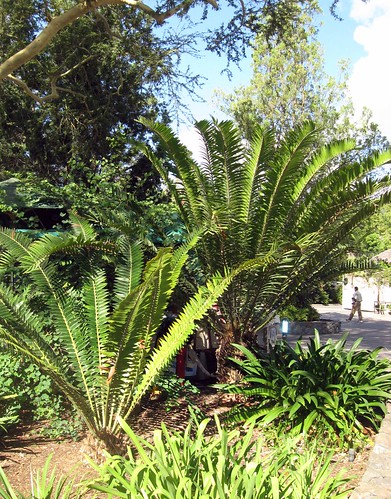This is a cycad with a history, it was first recorded in 1722 by Carl Pehr Thunberg of Sweden. It gets to be rather massive as one of the giant grassland Encephalartos. The one on the right there is showing a nice trunk but mature old specimens can put on up to 4.5 metres of trunk with a number of pups. As a popular garden plant this, like all Encephalartos, is overcollected but a number of protected populations exist across the Eastern Cape such as in Addo Elephant Park. There is quite a famous recorded poisoning incident involving the seeds of this one and some besieged troops in the Boer War. Apparently the effect of eating the seeds was agonising pain (which passed in a day or so). Interestingly this will apparently also naturally hybridise with E. horridus on occasion which should make for very interesting seedlings.

4 comments:
I have visions of a really massive E. horridus with very long fronds. This makes me happy.
The hybrids I've seen photos of have been manmade and are quite varied. I have a recollection of something looking exactly like you described (awesome) and something else looking like horridus but green (not awesome).
Hmm, half the "fun" of horridus is the blue colour. I think there's a call for the big varieties breeders to have a go with cycads, as they're far more interesting than puny flowers...
Well a nursery called Chumley Cycads is playing around with Cycas hybrids. I must confess I'm a species/locality purity kind of guy but that might just be the gotta have 'em all mentality at work.
Post a Comment